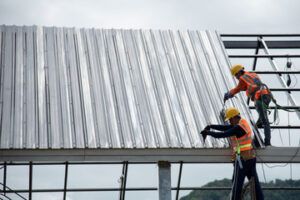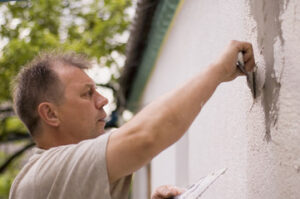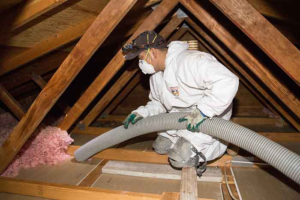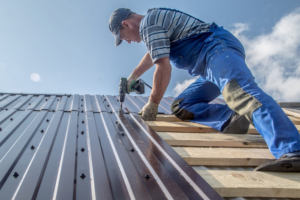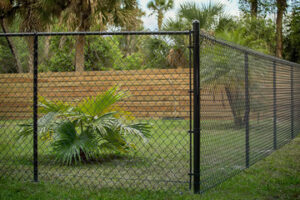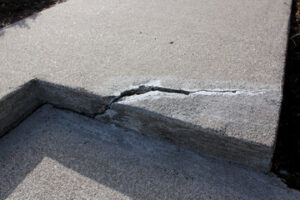Moving is a complex process that requires the expertise of Caldwell Movers. It’s important to choose a company that has a good reputation and provides references from past customers. Also, make sure they are insured and registered with the FMCSA.

Those who opt for released value protection are responsible for no more than 60 cents per pound of article. This option is ideal for people who have a limited budget.
The packing process is an essential part of a move. It can take weeks or months to pack up your home, depending on the size and contents of your possessions. A professional moving company can save you time and money by providing comprehensive packing services. They can also help you save space by arranging your belongings in the most efficient manner. This makes unpacking and finding items easier in your new home. They can also provide high-quality packing materials that offer superior protection than those you would find in a local store. This significantly reduces the stress of a move and helps you get settled in your new home faster.
It is important to start the packing process well in advance of the move. This will give you a chance to sort through items and discard or donate unwanted items. It will also give you a chance to prepare a plan of action for your move, including what you need to do on relocation day.
Start by focusing on items that you don’t use often, such as books or kitchenware. This will free up space and make it easier to pack the rest of your belongings. You can also make it more convenient to move by keeping like items together, such as clothes and toys in the same box.
When packing, be sure to label boxes clearly. This will help you identify which room a box belongs to when unpacking, and will make it easier to arrange them in the right place in your new home. Clearly labeling your boxes will also make it easy for movers to pick up the right box and avoid mishandling them during transportation.
Whenever possible, you should try to avoid packing fragile items until last. This will ensure that your delicate items don’t become damaged or broken during transit. This is particularly important for long-distance moves, where the distance of travel can increase the risk of damage. You should also use a variety of padding and wrapping materials to protect your fragile items. These include newspaper, bubble wrap, old towels and cling film. For large furniture, you should consider using a blanket to protect it from scratches and dirt. These measures will protect your furniture and reduce the amount of stress you have to endure during the move.
Loading
Loading a moving truck can be a daunting task. However, a little planning and foresight can make the process much easier. It is important to use quality packing materials, properly label boxes and arrange heavy items to prevent them from shifting during transport. It is also helpful to use furniture pads and hand trucks to protect fragile items.
The number of boxes and types of items you have can also affect loading time. Larger boxes and heavier furniture take longer to load than smaller boxes. It is also important to have a clear path to the truck and to have enough people to handle the job efficiently.
When packing your boxes, it is best to work on two or three tiers at a time. Do not attempt to load a whole box on one level, or it will become too heavy and difficult to manage. You should also evenly distribute the weight of the boxes, and pack them tightly. If you have any extra space, fill it with towels or blankets to prevent the boxes from shifting during transportation.
Another key factor is the size of your home or apartment. Small studio apartments or one-bedroom apartments usually take less time to load than larger homes. Larger homes tend to have more furniture and personal items, which increases loading time. Stairs or a long trip to the moving truck can also slow the loading process, particularly with large, bulky items.
Before the move, you should gather all necessary supplies for your moving truck. Ensure that you have enough sturdy, reliable boxes, furniture dollies and moving blankets to protect your belongings. It is also a good idea to have a few empty boxes on hand for the items that cannot fit in the rest of the boxes.
Once you have all your items ready to be loaded, start with the heaviest pieces of furniture. This will help to distribute the weight evenly and reduce damage. Then, stack other boxes on top of the furniture, ensuring that they are snugly fitted. Don’t forget to use straps or ropes to secure the boxes.
Once you’ve finished loading your boxes and large furniture, be sure to close the door of the truck. This will keep out debris and water. You should also secure the lid with a heavy-duty moving strap. This will keep the contents from spilling during transit and prevent the truck from becoming unsteady. Finally, don’t forget to lock the truck before removing the keys. This will deter thieves and provide peace of mind for the duration of the move. By following these simple tips, you can speed up the loading process and make it as seamless as possible for your movers.
Transportation
Essentially, logistics is the process of planning and organizing the intricate details of the move, including transportation methods, coordinating schedules, handling customs procedures for international moves, securing permits and licenses, and assessing potential risks. Movers are the physical executioners of the logistical plan, and they use specialized equipment and skilled employees to ensure that every step is taken care of.
Non-allowables are items that should not be included in the household goods shipment (poisons, corrosives and flammables are common examples). Additionally, perishables can only be moved if special arrangements have been made, and the carrier will not assume liability for frozen or refrigerated food products. The carrier will also not transport alcoholic beverages or illegal drugs.
Linehaul charges are based on the distance of the vehicle journey from the origin to the destination. Peak season rates are typically charged during the summer months, and are higher than off-peak rates. Additional charges are applied for accessorial services, which include stairs and elevators, fuel surcharges, and debris disposal. The estimate form will clearly specify all applicable charges.
The agent should provide a written proposal with an estimated cost for the transportation of the customer’s household goods and a description of services to be performed. This estimate should include a binding or non-binding option, and should indicate the total charge amount (based on the actual weight of the shipment and the tariff provisions in effect) and all charges for accessorial services.
An agent should conduct a survey of the shipment to assess its condition and determine the estimated weight. This will help the mover to calculate the total charges for the household goods transportation and to identify any items that may require special handling. The survey is also a good time to make sure that the customer understands all aspects of the contract, including transportation charges, liability coverage, packing and loading options, and claims procedures.
A signed copy of the bill of lading is the proof that the carrier has received the household goods shipment and is responsible for its safe conveyance to the destination point. It is important to keep this document until all charges are paid, the shipment has been delivered and all claims if any have been settled. In addition to the bill of lading, the agent should provide the customer with an order number for their shipment. This will appear on the front of the bill of lading and should be used to contact the carrier. An order number is also included on the survey form. A shuttle service is the use of a smaller vehicle to provide service to a residence that is not accessible to the assigned over-the-road van. This is generally charged in 15-minute increments, and there may be a 4-hour minimum charge for jobs occurring during overtime hours.
